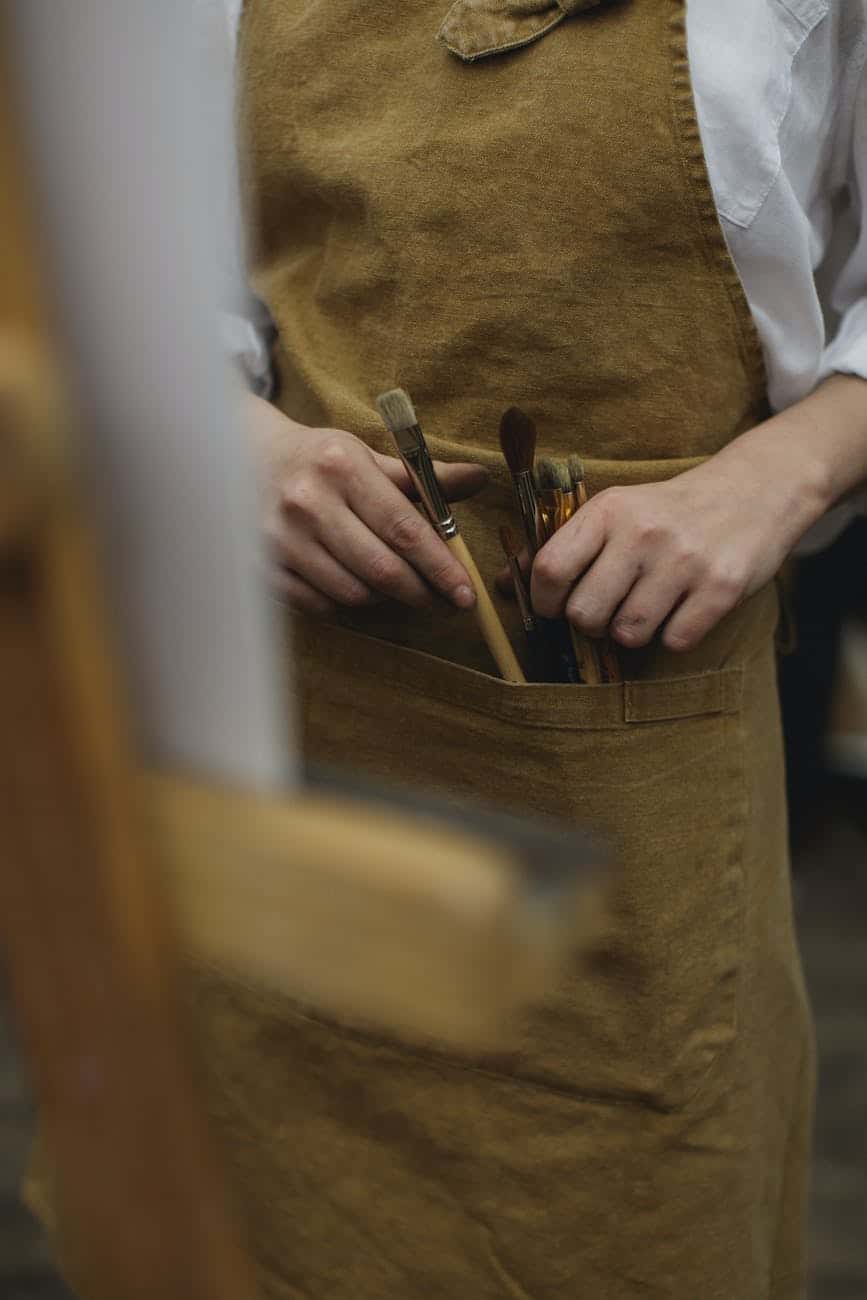Fat over lean is a very simple rule in oil painting that you will learn about when you start oil painting. In simple terms, it just means that you should use lesser oil medium in the first and bottom layers, in order to give those layers less flexibility and faster drying times.
Usually, the fat over lean rule ensures that the paint bonds perfectly with the canvas. The main advantage is that the paint doesn’t get any cranks anywhere near soon. This is how lean paint is covered with fatter paints.
When you are following the fat over lean rule and using any oily medium, it means that the leaner layer dries off more quickly than the layer of fat paint that you’re going to cover it with.
Since oxidation can take time (days or even months), the paint will expand with time and then contract again as the unsaturated fatty acids link up to absorb the oxygen, all while the paint is polymerising. The fat-over-lean rule ensures that the layer beneath does not force any pressure on the top layers when the top layer is already dry, so that is why every added layer of paint is more flexible than that of the layer beneath it.
What Does ‘Fat’ & ‘Lean’ Mean?
Lean Paint
So as the name suggests, the lean paint is relatively thinner than other paints. This paint is made by adding solvents. This paint becomes diluted with the addition of this drying agent. This paint will have less gloss and a matte look to it.
This paint dries very quickly due to the rapid evaporation of the solvent, even faster than the paints that are solved with oil-based mediums.
Fat Paint
A fat paint can be described as a paint with a higher percentage of oil. This is done by any type of oily medium (such as linseed oil) to the paint and modifying it from its original state. This is just like adding the binder to your paint in proportion.
The fat paint is very easy to spread over the canvas, but the high proportion of oily medium in the paint will dry slowly. But in return, this will give you a glossy look and more durability.
How to layer the paints according to the fat over lean painting rule?
When you paint the first layer of leaner paint, it will dry quickly. Still, you have to gradually and slowly increase the proportion of oily medium in the paint to make it more flexible with each added layer of paint.
So you have to use the thinner paint (that is mixed with solvents) as the first layer on the canvas and gradually go high on oil content in paint.
Does it make any difference when not following the fat over lean rule?
Not following the fat over lean paint rule in oil painting can potentially cause problems in the end result of the painting. The paint will appear pale, and the layer beneath it, which is saturated higher than the layer on the top, will appear matte. Furthermore, with time, the painting may start to develop cracks when the leaner paint is bonded with the flexible paint, and the paint may even come off from the surface in some places.
Are their Any Other Alternatives?
Water Soluble Oil Paints
See main post on Water Soluble Oil Paints
Alkyds
Alkyds are resins derived from different sources, such as oils, acids, or alcohol. Alkyds have different chemical structures to oil, and that’s why it differs from the polymerising process of oil. This medium dries off quickly, and the layer is flexible according to its proportion mixed with the paint.
When using alkyds as the medium, always remember to cover a less flexible paint with more flexible paint by gradually adding more alkyd to the paint.
Cold wax
Cold wax is the only medium where you don’t have to worry much about the fat over lean rule. Cold wax will be the only thing you’ll be adding to the oil paint instead of solvents or oily mediums. You can get an impasto effect by adding only the wax as the medium.
You may Also be interested in…
- What is the Fat-Over-Lean Rule in Oil Painting
- The Ultimate Guide To Oil Painting: Rules, Mediums & Varnishes
- What Is Sansodor Used For In Oil Painting
- Why Are Parts of My Oil Painting Shiny
- Turpentine vs White Spirit: Which Solvent Should I Use For Oil Painting
- Thin Oil Paint Without Turpentine (8 Alternatives)
- Do You Have To Prime A Canvas Before Painting?
- Can You Varnish Over A Watercolour Painting?
- Making Oil Painting Less Toxic (Quick & Easy Solutions)
- Do You Have To Use Linseed Oil When Oil Painting
- Can You Paint On Linen Canvas?
- Should I Paint On Canvas Or Paper?

